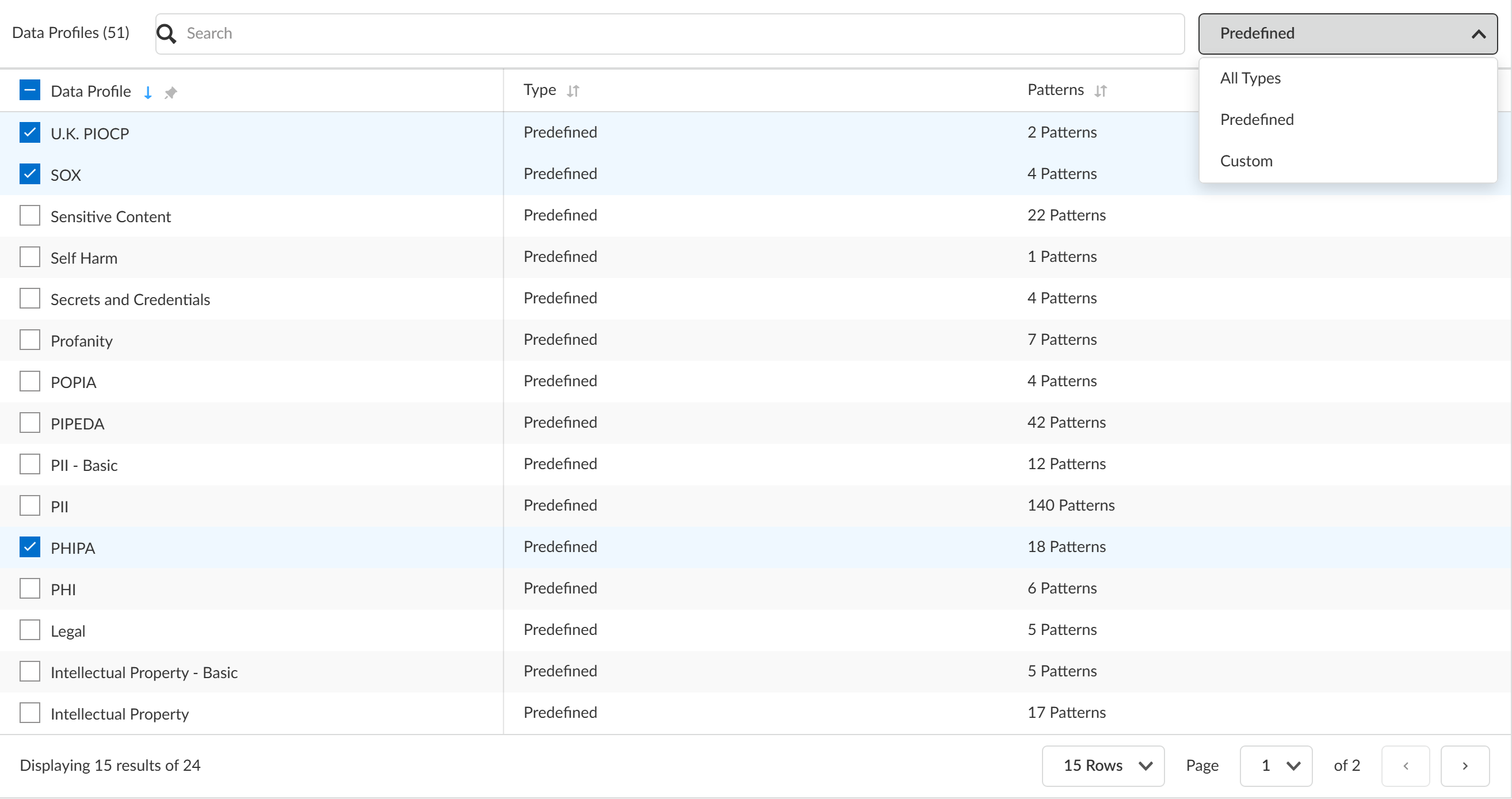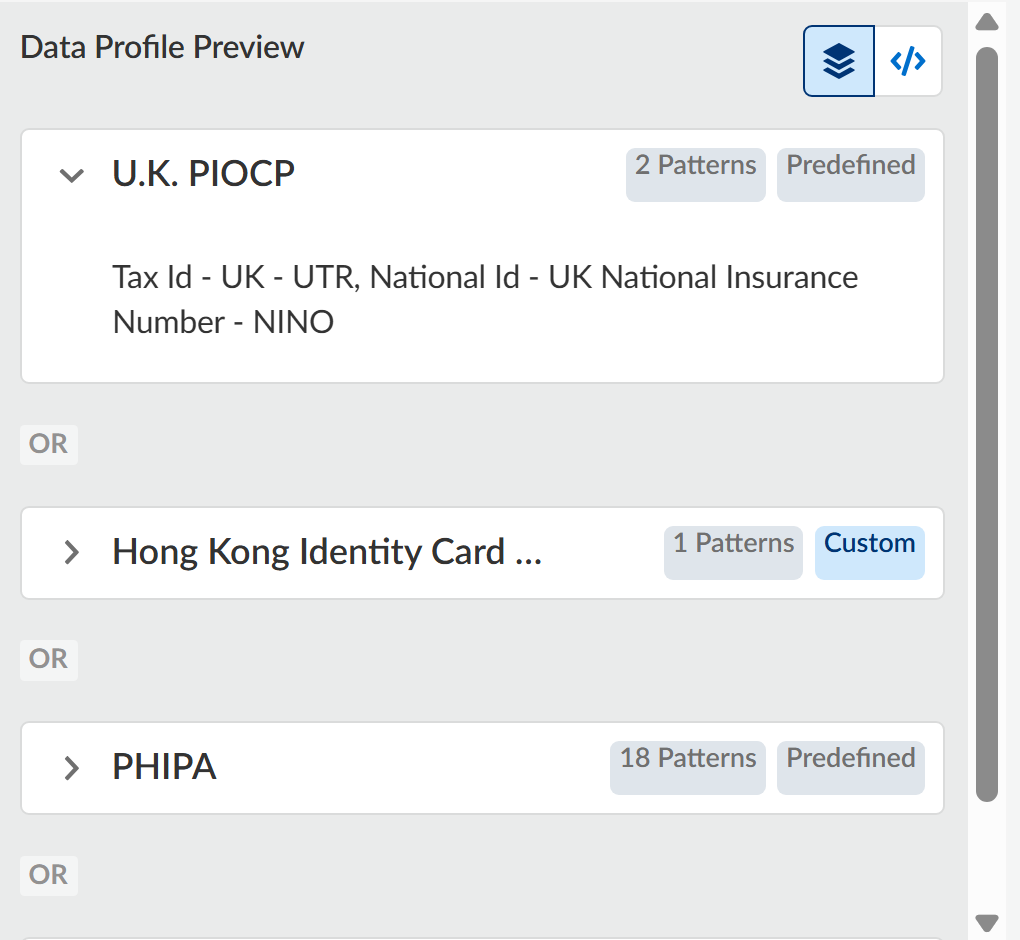Enterprise DLP
Create a Granular Data Profile on Strata Cloud Manager
Table of Contents
Expand All
|
Collapse All
Enterprise DLP Docs
Create a Granular Data Profile on Strata Cloud Manager
Create a granular Enterprise Data Loss Prevention (E-DLP) data profile to apply differentiated
inline traffic inspection and response actions within a single Security policy rule on Strata Cloud Manager.
- Log in to Strata Cloud Manager.(Optional) Create your classic or advanced data profiles on Strata Cloud Manager.You can create a granular data profile that combines predefined data profiles and any custom data profiles you created.Select ConfigurationData Loss PreventionData ProfilesAdd Data Profile and create a Granular Data Profile.Enter a descriptive Name for the granular data profile and click Next to continue.Select the Data Profiles you want to add the granular data profile.You can search for or filter the list of available data profiles you want to add. Enterprise DLP displays All Types of data profiles by default, or you can filter for all Predefined or Custom classic or advanced. Enterprise DLP does not support adding a granular or nested data profile to a granular data profile.Use the Data Profile Preview to review the granular data profile configuration. Enterprise DLP displays how many pattern match criteria are added to each data profile and whether the data profile is a Predefined or Custom data profile. Expand each data profile to review all pattern match criteria added to the data profile.Granular data profiles support only an OR operator for all added data profiles.
![]()
![]() Click Next to continue.Review the Summary of the granular data profile.Edit the Basic Information or Data Profiles to modify the granular data profile configuration if needed. Save the granular data profile if you don't need to make any further edits.Use the Data Profile Preview to review the granular data profile configuration. Granular data profiles support only an OR operator for all added data profiles. Expand each data profile to review all associated data patterns.expand the Actions column to test the granular data profile match efficacy.Select ConfigurationNGFW and Prisma Access and Push Config.Modify a DLP rule to attach the data profile to a Security policy rule.The DLP rule defines the type of traffic to inspect, the impacted file types, action, log severity, and more for the data profile match criteria. Enterprise DLP automatically creates a DLP rule with an identical name as the data profile from which it was created.
Click Next to continue.Review the Summary of the granular data profile.Edit the Basic Information or Data Profiles to modify the granular data profile configuration if needed. Save the granular data profile if you don't need to make any further edits.Use the Data Profile Preview to review the granular data profile configuration. Granular data profiles support only an OR operator for all added data profiles. Expand each data profile to review all associated data patterns.expand the Actions column to test the granular data profile match efficacy.Select ConfigurationNGFW and Prisma Access and Push Config.Modify a DLP rule to attach the data profile to a Security policy rule.The DLP rule defines the type of traffic to inspect, the impacted file types, action, log severity, and more for the data profile match criteria. Enterprise DLP automatically creates a DLP rule with an identical name as the data profile from which it was created.


